© previous project next project¨
68 sq.m.
732 sq.ft.
A residence with much collection of books.
The rule of that the finish of the house is divided into three colors was set up. White: The frame of the house, Black: the auxiliary parts supporting the house, Blue :bookshelf.
Blue was chosen as the color that didn't conform to the existence of the books and erased the gravity of that. White and black was coordinates of the color on that other various colors will be relativized.
The rule determines the interior design of the house automatically, so the unexpected space appears by the accidental combination with three colors.
The rule was for blocking the banalization of the house. In Japan, living is that many life things invade a house and make the house banal. In this house, many books had the possibility of accelerating the banalization.
The bookshelves space serves as a space to which two rooms are connected. Between the bookshelves are passages for connecting the both side's rooms. It has become buffer zone or big corridor. The folding door divides each space. If opened the folding door, the each room and bookshelf space are joined as one continuous space. If closed the folding door, each room gets independence.
The bookshelf space has other function. It also is used as a vertical passages for the natural light and wind. The floor in the bookshelf space is composed of the FRP grating. So, from the top light window, the natural light streams until the first floor via the bookshelf space. On the contrary, the wind elevates from the first floor to the high side window for exhausting the heat and the humidity.
Location : Mitaka, Tokyo
Architect : Daigo Ishii + Future-scape Architects
Structure Engineer : Sano Structure Design Office
Cooperation : Hiroyuki Kato
Construction : Musashino Construction Company

@@
@@
@
@
@
@
@
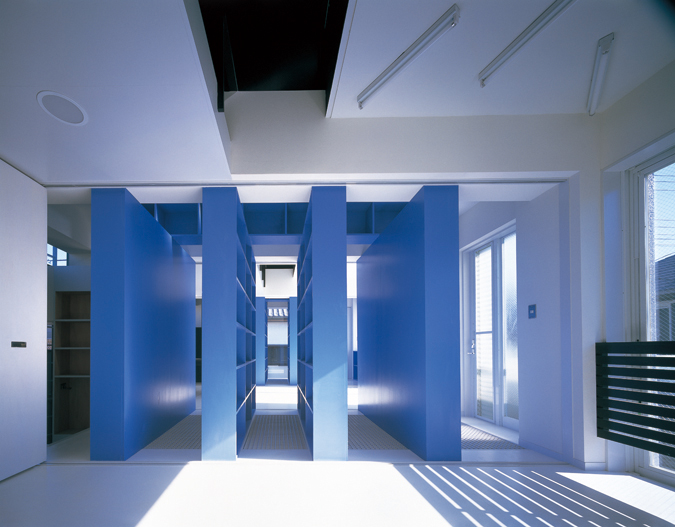 See the library, the private room B beyond it and another library from the private room A on the 2nd floor. The bookshelves are painted in blue, freeing from the weight of the books. Photo: Japan Architect
See the library, the private room B beyond it and another library from the private room A on the 2nd floor. The bookshelves are painted in blue, freeing from the weight of the books. Photo: Japan Architect
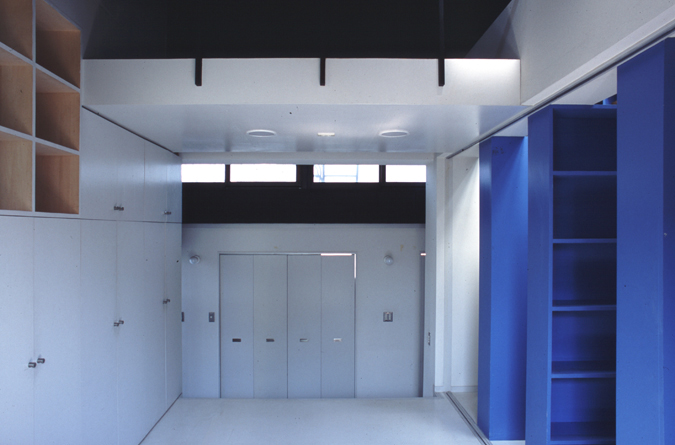 See the private room A on the 2nd floor. The space is utilized in multiple layers. The floating floor at the top becomes an attic, and the space under the floor is ued as a storage by the result of reverse beams.
See the private room A on the 2nd floor. The space is utilized in multiple layers. The floating floor at the top becomes an attic, and the space under the floor is ued as a storage by the result of reverse beams.
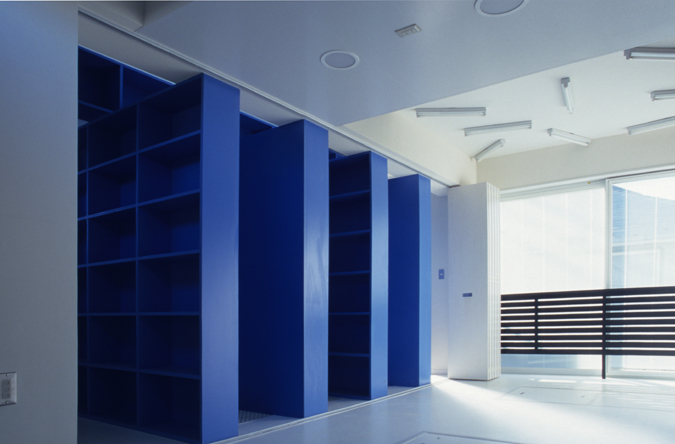 See the private room A on the 2nd floor. The library is on the left, and it is separated by a folding door. When you open the folding door, the light from the top light of the library comes in brightly.
See the private room A on the 2nd floor. The library is on the left, and it is separated by a folding door. When you open the folding door, the light from the top light of the library comes in brightly.
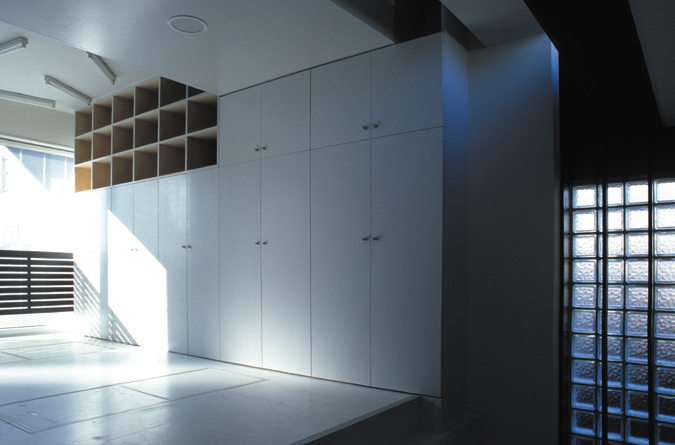 See the private room A.
See the private room A.
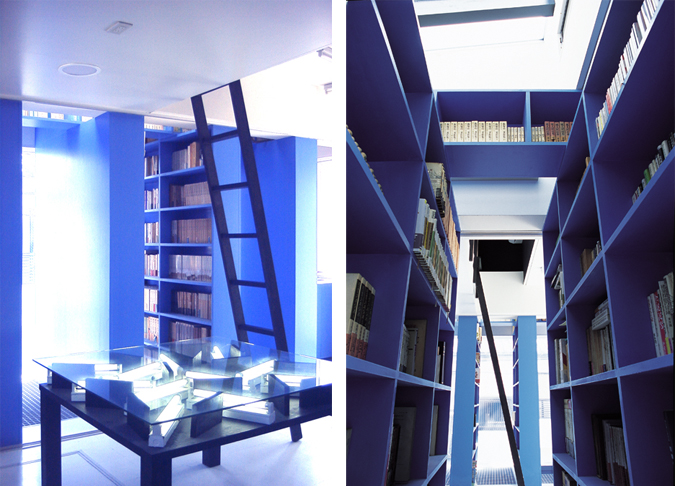 (Left) The private room B on the 2nd floor. The light from the library comes in brightly. (Right) The library. It is a space connecting two rooms, and when the folding door is opened, the second floor becomes one room space.
(Left) The private room B on the 2nd floor. The light from the library comes in brightly. (Right) The library. It is a space connecting two rooms, and when the folding door is opened, the second floor becomes one room space.
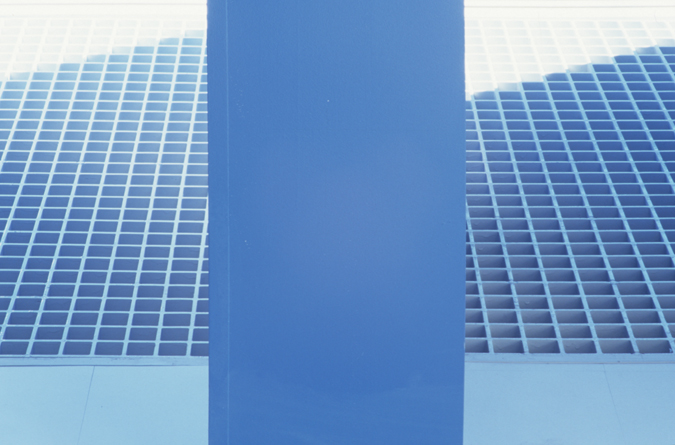 FRP grating on the floor of the library on the 2nd floor. Light from the top light is transmitted to the first floor through this grating.
FRP grating on the floor of the library on the 2nd floor. Light from the top light is transmitted to the first floor through this grating.
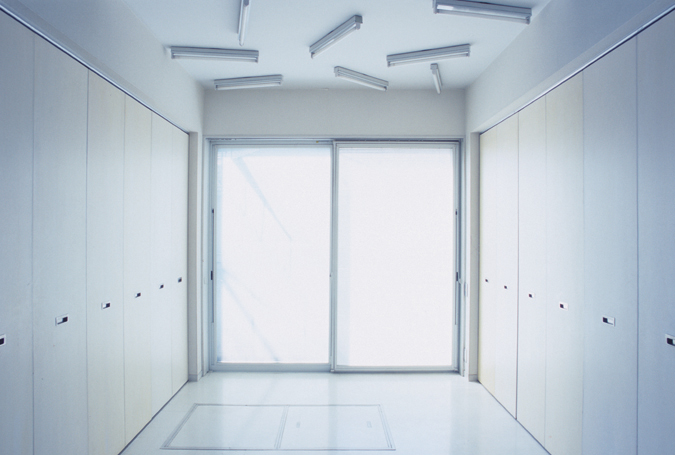 The folding door between the private rooms on the 2nd floor and the libraries can be opened and closed. When closed, each space becomes a highly independent space.
The folding door between the private rooms on the 2nd floor and the libraries can be opened and closed. When closed, each space becomes a highly independent space.
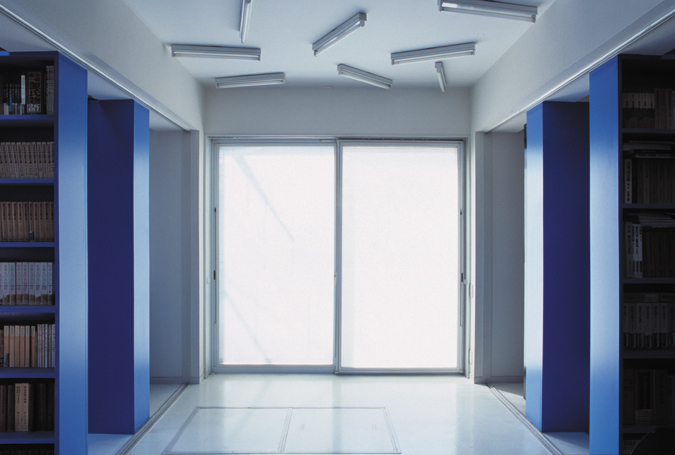 The folding doors between the private rooms on the 2nd floor and the libraries are open. When opened, the libraries and private rooms are connected, and the entire second floor becomes one space.
The folding doors between the private rooms on the 2nd floor and the libraries are open. When opened, the libraries and private rooms are connected, and the entire second floor becomes one space.
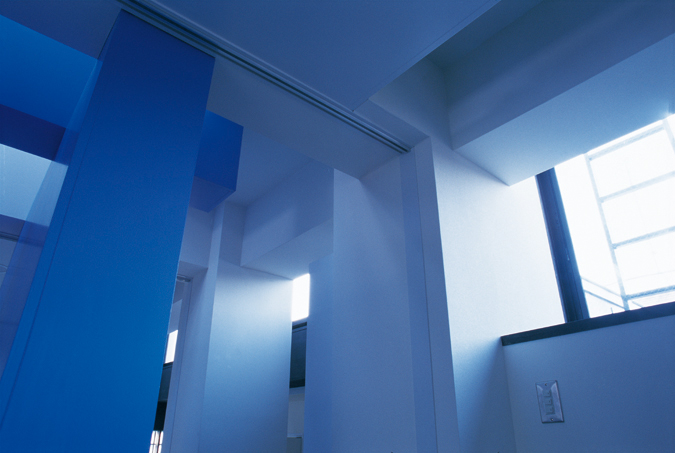 The combination of white, black, and blue, which is the rule of this house. Overlapping of three colors appears unintentionlly.
The combination of white, black, and blue, which is the rule of this house. Overlapping of three colors appears unintentionlly.
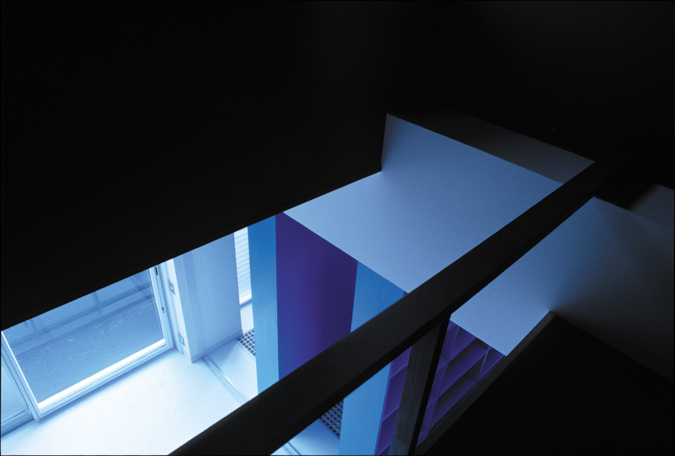 The combination of white, black, and blue, which is the rule of this house. Overlapping of three colors appears unintentionlly.
The combination of white, black, and blue, which is the rule of this house. Overlapping of three colors appears unintentionlly.
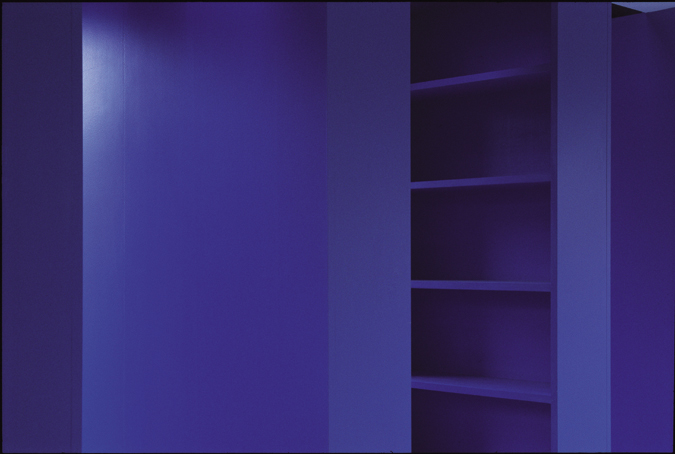 The bookshelves painted in blue.
The bookshelves painted in blue.
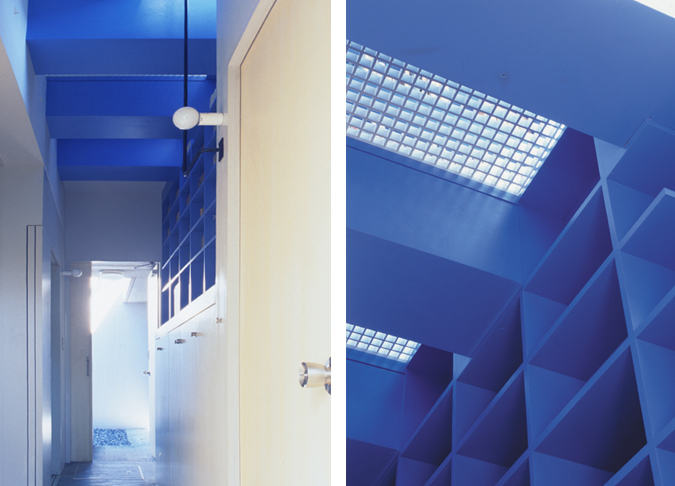 The entrance hall on the 1st floor. Light falls through the top light and the large windows on the road side, andthe wind passes .
The entrance hall on the 1st floor. Light falls through the top light and the large windows on the road side, andthe wind passes .
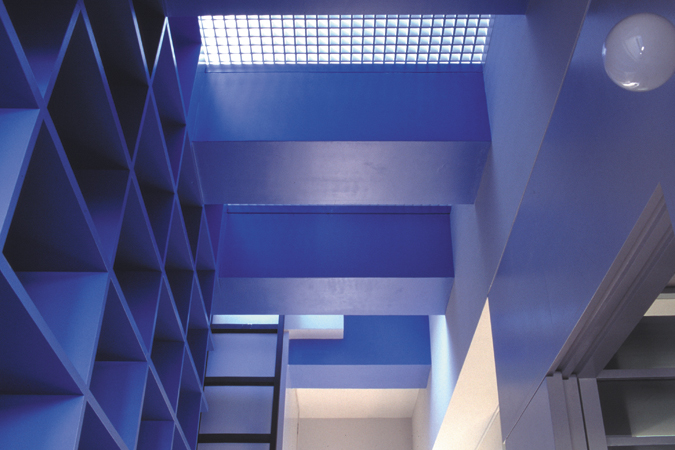 The entrane hall on the 1st floor. Light falls through the top light, the large windows and the grating floor on the 2nd floor and the wind passes.
The entrane hall on the 1st floor. Light falls through the top light, the large windows and the grating floor on the 2nd floor and the wind passes.
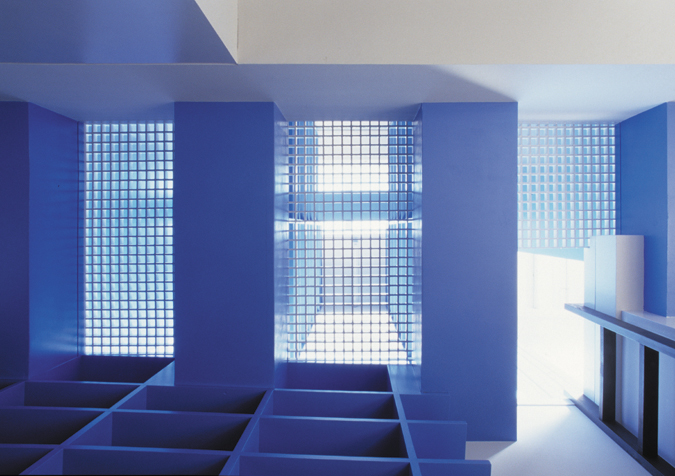 The entrane hall on the 1st floor. Light falls through the top light, the large windows and the grating floor on the 2nd floor and the wind passes.
The entrane hall on the 1st floor. Light falls through the top light, the large windows and the grating floor on the 2nd floor and the wind passes.
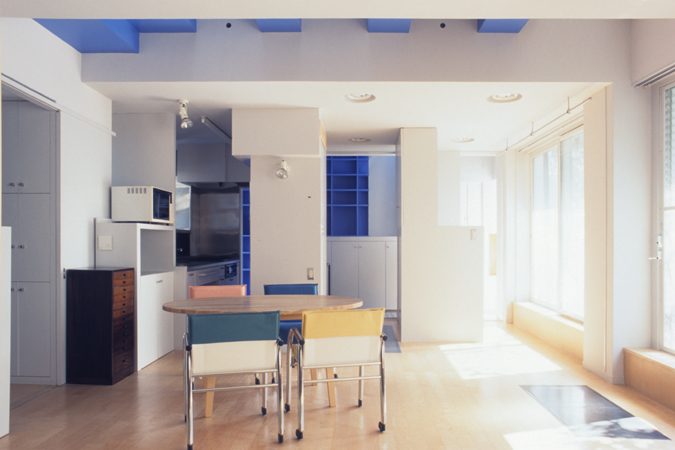 Since the house is located in the town, the lighting conditions of the LDK on the 1st floor are not good, but the bright light from the top light falls through the grating floor of the library on the 2nd floor.
Since the house is located in the town, the lighting conditions of the LDK on the 1st floor are not good, but the bright light from the top light falls through the grating floor of the library on the 2nd floor.
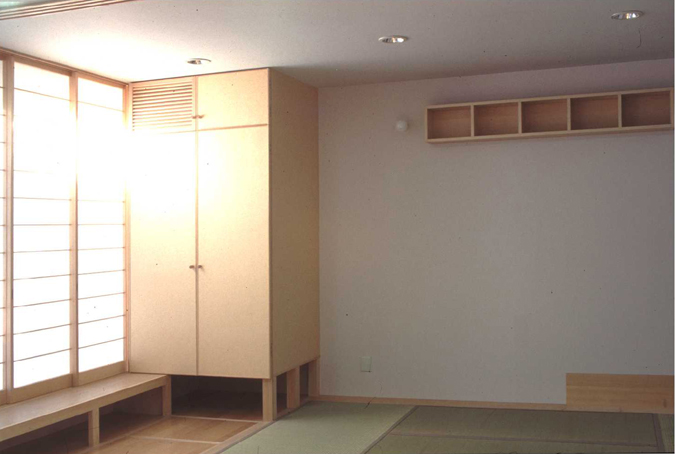 The Japanese room on the 1st floor.
The Japanese room on the 1st floor.
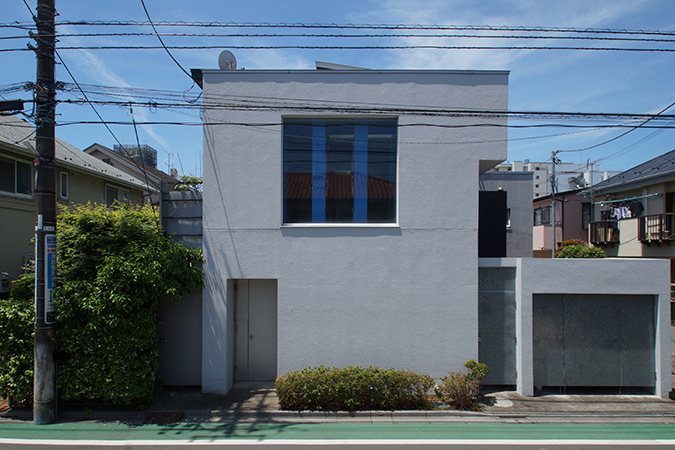 The exterior appearance on the road side. Since the first floor is close to the road, there are no windows, and large windows are installed at the height of the second floor to ensure privacy and light to the 1st floor and the 2nd floor.
The exterior appearance on the road side. Since the first floor is close to the road, there are no windows, and large windows are installed at the height of the second floor to ensure privacy and light to the 1st floor and the 2nd floor.
The exterior appearance on the road side. The position of the exterior wall on the road side matches the position of the average position of a wall line of other houses in the residential area.
@
@
@
@
@
@
@
@
@
@